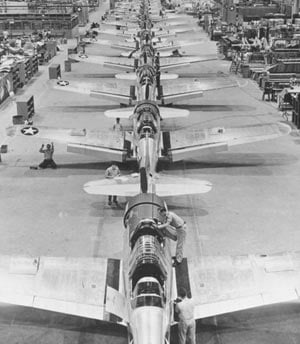Think about it. Did you spend exactly the same amount of time commuting to work today as you did yesterday? No? That's variation.

While these planes look identical, some variation exists. But is the variation within acceptable limits?
The box of cereal you bought last week probably was not filled to precisely the same volume as the last one you bought. Variation at work again. We can't escape it.
They say variety is the spice of life, and there's no denying that some variation is welcome. Almost everyone enjoys an unseasonably warm day, for instance.
But variation is not welcome in business and industry, which is why businesses use data analysis and quality improvement methods like Six Sigma. The goal is to reduce the amount of variation in a product or process to ensure that it always delivers consistently high quality.
Think about your own experience. When you order your favorite dish at your favorite restaurant, you expect consistency, right? Perhaps this week's hamburger had two pickle slices while last week's had three, but as long as it tastes the way you expect, that variation is acceptable.
A little bit of variation is inevitable, but we are satisfied as long as it stays within acceptable limits.
Which is why statistical process control, or SPC, is so important. Companies want processes to be stable, consistent, and predictable, because if a process is out of control, the company has no way to predict and guarantee the quality of products and services. Assessing process stability also enables businesses to discover and correct variation that reduces quality.
Control charts are the primary SPC tool for monitoring process stability. A control chart turns time-ordered data for a particular characteristic, such as product volume or the time it takes to prepare a meal after the order is placed, into a picture that is easy to understand. Control charts serve to warn us when unusual shifts in a process occur.
Statistically speaking, control charts help you detect nonrandom sources of variation in the data. In other words, they separate variation due to common causes from variation due to special causes, where:
- Common cause variation occurs naturally in a process, and is always present.
- Special cause variation is unusual, rooted in something that is not typically part of a process. Special causes can be either detrimental or beneficial.
Statistical software makes creating control charts easy, but unless you choose the right “subgroups” of your data the charts are useless. Understanding and choosing rational subgroups before you collect your data and create control charts is critical, but the concept is frequently misunderstood.
To learn more about that, check out this article about what can go wrong with control charts when subgroups are improperly assigned, written by two of my colleagues.



